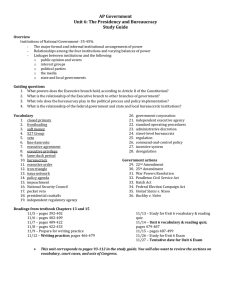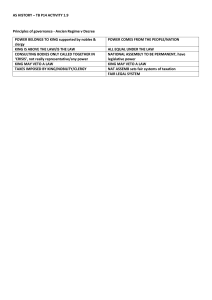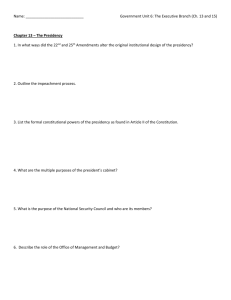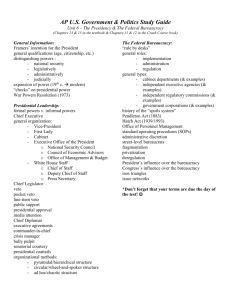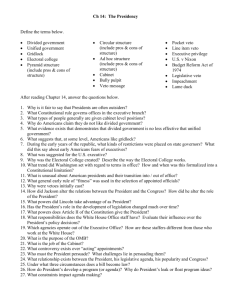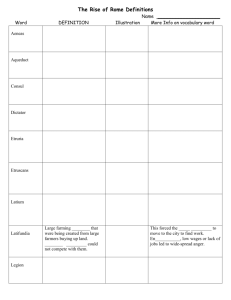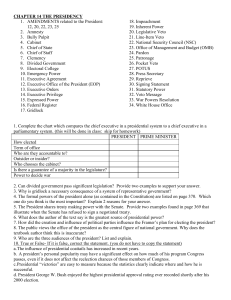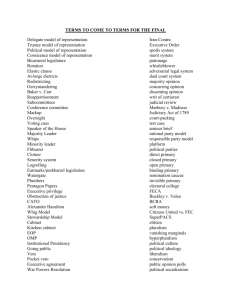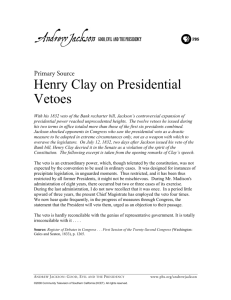Vocabulary: Executive Branch & E.B. Bureaucracy
advertisement
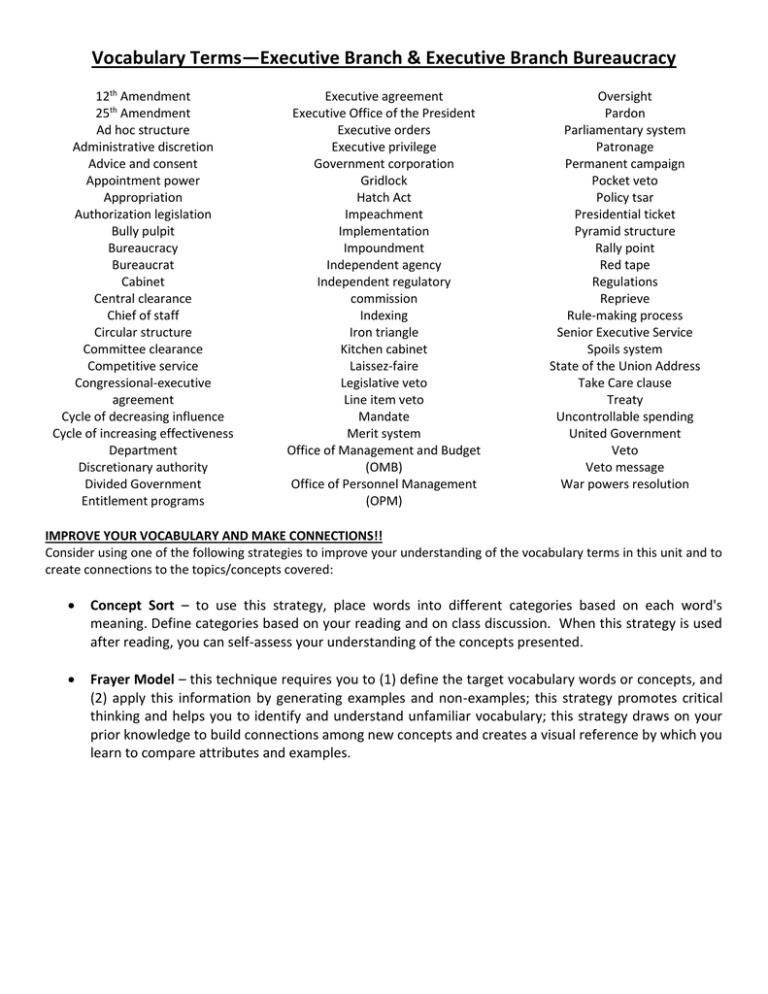
Vocabulary Terms—Executive Branch & Executive Branch Bureaucracy 12th Amendment 25th Amendment Ad hoc structure Administrative discretion Advice and consent Appointment power Appropriation Authorization legislation Bully pulpit Bureaucracy Bureaucrat Cabinet Central clearance Chief of staff Circular structure Committee clearance Competitive service Congressional-executive agreement Cycle of decreasing influence Cycle of increasing effectiveness Department Discretionary authority Divided Government Entitlement programs Executive agreement Executive Office of the President Executive orders Executive privilege Government corporation Gridlock Hatch Act Impeachment Implementation Impoundment Independent agency Independent regulatory commission Indexing Iron triangle Kitchen cabinet Laissez-faire Legislative veto Line item veto Mandate Merit system Office of Management and Budget (OMB) Office of Personnel Management (OPM) Oversight Pardon Parliamentary system Patronage Permanent campaign Pocket veto Policy tsar Presidential ticket Pyramid structure Rally point Red tape Regulations Reprieve Rule-making process Senior Executive Service Spoils system State of the Union Address Take Care clause Treaty Uncontrollable spending United Government Veto Veto message War powers resolution IMPROVE YOUR VOCABULARY AND MAKE CONNECTIONS!! Consider using one of the following strategies to improve your understanding of the vocabulary terms in this unit and to create connections to the topics/concepts covered: Concept Sort – to use this strategy, place words into different categories based on each word's meaning. Define categories based on your reading and on class discussion. When this strategy is used after reading, you can self-assess your understanding of the concepts presented. Frayer Model – this technique requires you to (1) define the target vocabulary words or concepts, and (2) apply this information by generating examples and non-examples; this strategy promotes critical thinking and helps you to identify and understand unfamiliar vocabulary; this strategy draws on your prior knowledge to build connections among new concepts and creates a visual reference by which you learn to compare attributes and examples. Definition Facts Word/Concept Examples Non-examples
